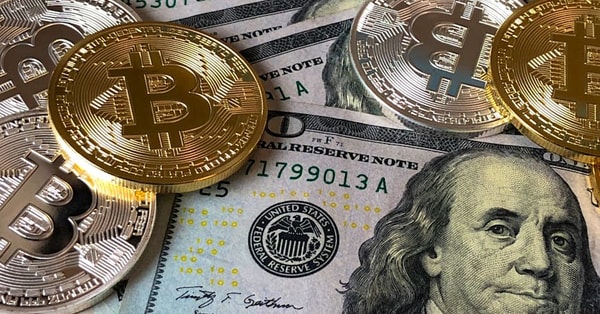RBA's Interest Rate Cuts Are Off the Table After Inflation Spike
The RBA's hopes for an interest rate cut are dashed as inflation surges, leaving Australians to navigate a challenging economic landscape.
In the world of economic forecasts, few events can shatter financial optimism quite like the announcement of inflation rates. Just prior to the release of the September quarter Consumer Price Index (CPI) figures, there was a glimmer of hope that the Reserve Bank of Australia (RBA) might announce a cut in interest rates on Melbourne Cup day. However, this optimism quickly faded with the latest inflation data. With a quarterly inflation rise of 1.2%, which was significantly higher than economists and investors had anticipated, the prospect of lower rates vanished.
The rise in inflation effectively gives the RBA a solid reason to maintain current interest rates, and perhaps even to disregard the recent uptick in unemployment. On the evening before the CPI release, RBA Governor Michele Bullock addressed attendees at the Australian Business Economists annual dinner. She expressed a calm demeanor regarding the recent increase in the unemployment rate, which had surged to 4.5%. Bullock remarked that the rise was “a bit of a surprise,” but reassured her audience that “monthly numbers can be volatile.” She concluded by noting that this rate is “still pretty low, compared with where it was pre-Covid.”
While her remarks may have provided some comfort, comparing current unemployment rates to pre-pandemic levels is not entirely reassuring, especially considering that in 2019, discussions revolved around potential recession fears. Nonetheless, the RBA appears to be using the current inflation data as a convenient justification for not needing to cut interest rates in response to rising unemployment.

The latest annual inflation figure rose to 3.2%, a significant increase from the 2.1% recorded in June. This surge marks the fourth-largest annual inflation spike in the past four decades. With such figures, one might wonder where the desired inflation rates are, especially given the RBA’s target band of 2% to 3%.
📖 Read more:
ratesIt's important to note that the RBA and advocates for lower interest rates typically focus on the trimmed mean inflation rate, which currently stands at 2.95%. Another common measure, the weighted median, is slightly lower at 2.85%. Both figures remain comfortably within the RBA's target range, indicating that while CPI inflation has surged, core inflation remains stable and largely aligned with expectations.

The CPI’s increase can be attributed to specific price movements rather than a broad-based inflation across all sectors. Unlike the trimmed mean, which smooths out extreme price fluctuations, the CPI reflects significant spikes in certain areas. A notable contributor to the inflation rise this quarter was the dramatic increase in electricity prices, which surged following the discontinuation of state subsidies. This price jump accounted for approximately 15% of the overall inflation increase, a considerable impact given that electricity represents only 1.8% of the average household's total expenses.
To illustrate the impact of the withdrawal of state electricity rebates, consider the situation in Brisbane and Perth. In Brisbane, electricity prices skyrocketed by an astonishing 1,694% in the September quarter compared to the same period last year, when rebates were still in effect. This staggering figure does not necessarily reflect a true increase in the cost of electricity itself, but rather the removal of financial support that had previously kept household bills significantly lower.

As Australia navigates these economic challenges, the RBA’s decisions will be crucial in shaping the financial landscape. The current inflation figures provide a clear rationale for the RBA to maintain interest rates, even amidst rising unemployment. The central bank's focus on inflation could lead to a prolonged period of higher rates, potentially impacting consumer confidence and spending.
As the Australian economy continues to evolve, the interplay between inflation and unemployment will be closely monitored. With inflation rates staying elevated, it remains to be seen how the RBA will balance these competing economic indicators in its future policy decisions. Investors and consumers alike will need to prepare for the possibility of sustained higher interest rates, which could have far-reaching effects on borrowing costs and economic growth.

In summary, the recent CPI figures have effectively dashed hopes for interest rate cuts from the RBA, as inflation continues to rise. While the increase in unemployment presents a challenge, the central bank seems poised to prioritize inflation control in its decision-making. For now, Australians must adapt to a landscape where lower interest rates are off the table, and inflation remains a significant factor in shaping the economic outlook.
Tags:
Related Posts
When to Pivot: Mastering Market Demand for Your Startup
Feeling lost about your startup's next move? Discover how understanding market demand can guide your pivot and uncover new opportunities.
Transform Your Remote Team with These 5 Essential Tools
Discover five game-changing tools that can enhance your remote team's collaboration and streamline management. Make remote work easier and more efficient!
Mastering Remote Team Management: Essential Tools You Need
Discover the must-have tools for managing your remote team effectively. Transform your group into a cohesive unit with these practical tips!
Unlock Your Startup's Success with the Business Model Canvas
Feeling lost with your startup idea? Discover how the Business Model Canvas can help you validate your concept and navigate the entrepreneurial journey!
Turning Dreams into Customers: Smart Strategies for Startups
Starting a business on a budget? Discover real-world customer acquisition tactics that help bootstrapped startups thrive without breaking the bank!
Unlocking Growth: Customer Acquisition on a Budget
Discover how to attract customers without breaking the bank. Here are practical, low-cost strategies for your bootstrapped startup journey!